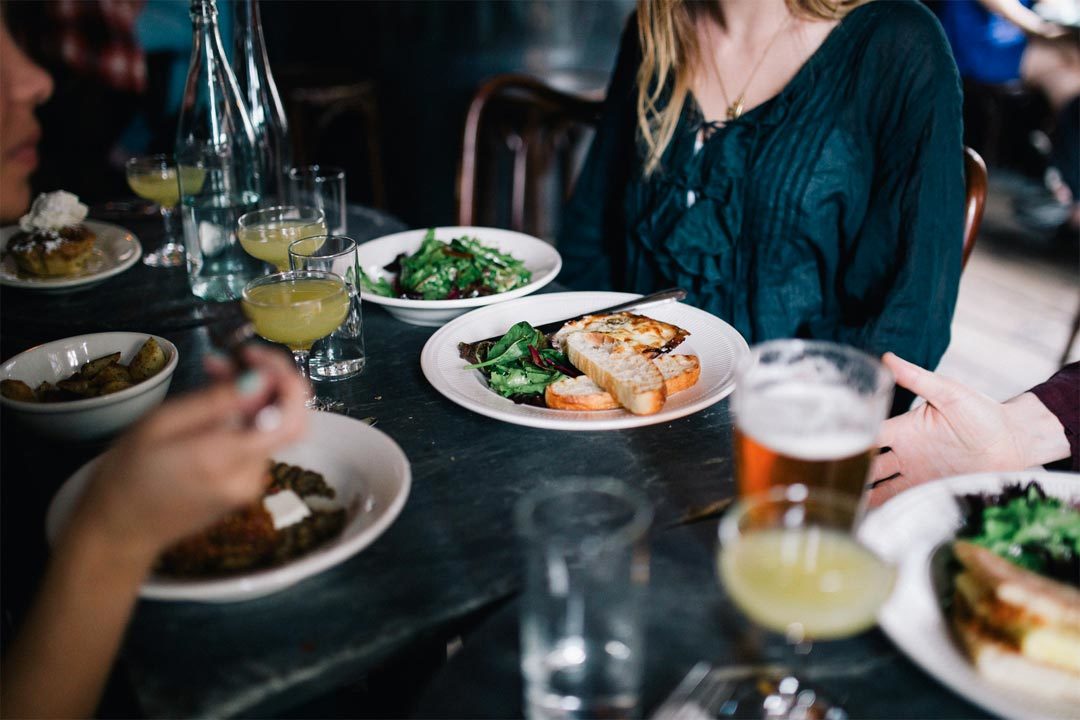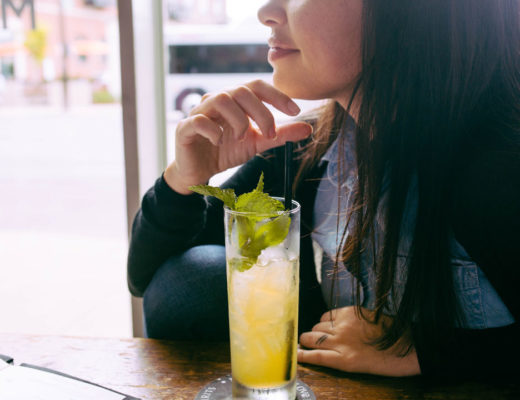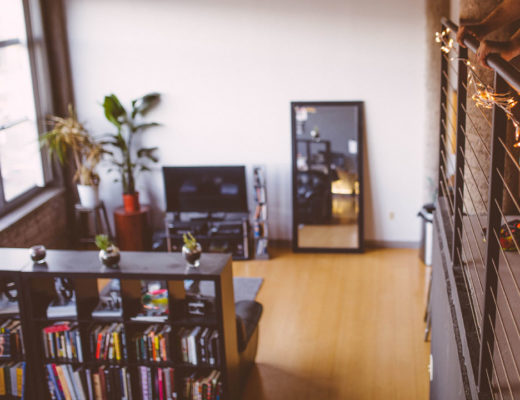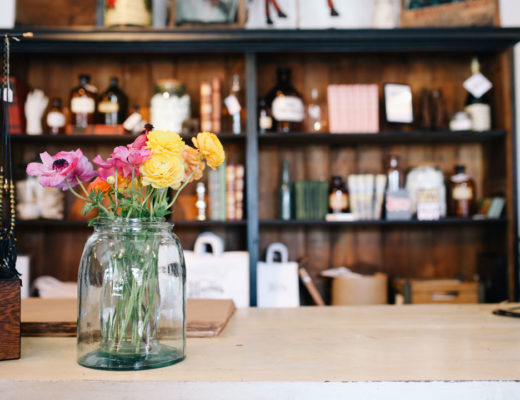Walking into Aridus Wine Company in Willcox, AZ, you’d assume from its massive size, state-of-the-art equipment and sleek design that owners Scott and Joan Dahmer must have planned it this way from the beginning. That couldn’t be further from the truth. They actually started at the other end of the spectrum.
“We didn’t wake up one morning and say, let’s do this. This was not our business model. It’s been an evolution of how we got here,” explained Scott.
An evolution that began many years prior in Healdsburg, CA, a quaint town located in Sonoma county that is a mecca for wine lovers and wine culture.
“It was just a really small town at the time. The whole culture back then revolved around harvest, vineyards and wineries. Our kids even got days off school because of harvest,” he said.
When they moved there, though, they weren’t really into wine. White zinfandel was the only type Scott would drink.
“As we became immersed in the wine culture there, we began to see we were missing out on so many other wines, and I think that’s what started to open our eyes. But still, even though we drove by all of these wineries each day and talked with the owners and winemakers in shops around town, we didn’t realize what a big deal it really was. It was only when we moved away did we understand we were in the middle of greatness and really appreciated the opportunity we had,” said Scott.
It wasn’t long after they moved to Arizona in 2001 that they learned about Arizona’s winemaking industry. They jumped on the opportunity and purchased land, but a custom crush facility was nowhere in the plans.
“We fell in love with the Turkey Creek area, which is about 40 miles from here, and bought 40 acres with a plan to plant grapes, build a house and a winery, and retire there,” said Scott.
Because they didn’t have a background in the industry, they hired a consultant from Napa Valley, Cary Gott, father of winemaker Joel Gott. It wasn’t until they began working with him did the idea for a custom crush facility began to take shape. Since they were going to put a fair amount of money into their small winery anyway, why not put it towards a custom crush model instead?
“Cary explained that we’d have more return on our investment while helping elevate the Arizona wine industry as a whole,” said Scott. “There were a lot of vineyards going in but not a lot of wineries. With a custom crush facility available, people wouldn’t have to put a the winery on each vineyard.”
The Dahmers were open to the idea, but they weren’t necessarily envisioning a 32,000 square foot facility with state-of-the-art equipment.
“That was Cary’s suggestion. He said we’d outgrow the winery on our vineyard in five years, that most people do. If we were going to do this, we should double the size at the very least or we’d regret it. Eventually, we’d grow into it. Judging from my conversations with other winery owners, that seems to be the truth,” said Scott.
It was around 2006 when they began looking at various properties. After seeing many that would need renovation, they realized it would be most cost effective to purchase one where they could essentially start from scratch. It wasn’t long after they changed focus that they found the building that houses Aridus today, just a few miles from downtown Willcox.
“This used to be an apple warehouse. It was a shell, just an open, insulated warehouse. There were no devising walls, very little light and a lot of dead birds. It looked kind of rough. I had my doubts at the beginning, but I really liked the idea of taking something existing and repurposing it, giving it a second life,” said Scott.
It was 2009 when they started the process, pulling engineers and consultants from California and searching for a local architect who understood the needs and design of a winery. They went through several before partnering with Deutsch Architecture Group out of Phoenix because of their background in industrial complexes.
“It took about a year to get the construction drawings done and secure permits, but once construction began, it was done before we knew it. They started in January 2012 and we were open in August,” said Scott.
It seemed like a “win win” all around. Not only was the structure easily transformed to fit their needs, but in addition, Deutsch was awarded the 2014 Sustainability Award from the International Interior Design Association, Southwest Chapter. Because of Scott’s “former life” as a graphic designer, it was particularly rewarding.
“I’m glad that even people outside of the wine industry appreciate what we’re doing,” said Scott.
“With my design background, I really love presenting something old in a new way. We sourced all this wood for the doors from old barns and homes in Willcox. Just heaps of weathered wood that was falling down. It’s like a piece of history, displayed in a different way.”
Aridus sits on 17 acres of land and is a total of 32,000 square feet. One of the most noticeable features in addition to its size is the seamless organization and flow of its setup. The grapes are unloaded and weighed on the covered crush pad, situated outside on the northernmost end of the building and about a third of the total space. This is also where they are sorted.
“The table vibrates and the grapes jump in front of you so you can take out anything you don’t want – overripe, under-ripe, leaves, caterpillars,” Scott explained.
While red varietals generally head to the Diemme Kappa de-stemmer first and then spend time in the fermentation tanks before pressing, white varietals go right into the Diemme bladder press. The “bladder” is constructed similar to an airbag and is mounted down the center of the press. It slowly increases with air, rotates, and increases a little more to intensify the press. The cycle continues depending on how much juice the client wants, generally taking about two hours from start to finish.
“The press can hold up to four to six tons. Depending on the style the client wants, we can program how much juice to get out of each lot. It’s important because the best quality juice comes out of the first press, what’s called a “first run.” The more you press, the less quality. The less you press, the less juice you get. We can stop it and separate it if the client wants the first run put in one tank and the rest in a separate tank. There are all kinds of possibilities,” Scott explained.
Heading inside, the fermentation room sits right next to the crush pad and is about the same size. There are around 20 fermentation tanks of varying sizes, ranging from large tanks that hold three to five tons of grapes, medium for two to three tons and small for one ton.
“It’s hard to judge how many tons clients are going to bring in. In California or Washington, it’s common to have 10, but Arizona is still growing, so right now people bring around two to four tons with two tons being the average. We might need to invest in additional small tanks,” said Scott.
While 200 tons is the most Aridus has processed in one harvest so far, it is set up for a total of 700 tons, with room to add additional tanks on the crush pad.
“This is our total man cave,” Scott joked as we headed into the temperature controlled barrel room, the next and largest room of the winery. “As you see, we have a lot more room to expand.”
It’s cavernous, echoing with the hissing of a humidifier that helps to reduce the natural evaporation of wine through the barrels, especially important in a dry climate like Arizona. Barrels sit on either side, red on one and white on the other, and are laid out in rows for each client. While Aridus supplies most of the equipment, clients are responsible for providing their own barrels.
“It’s like a chef with her tools,” explained Scott. “There are all kinds of wood, cooperages, and areas, so it’s a very personal choice. It’s important for each client to pick their own. The same goes for the bottling supplies.”
The far south end of the winery houses the GAI bottling line, the largest and fastest in the state. It can bottle up to 220 cases in an hour, which is about five to eight per minute. It’s all-inclusive, from empty bottle to label. It can bottle with corks, screw caps and a second type of screw cap that marries so seamlessly with the bottle that it doesn’t look like a cap. If corks are used, the foils are adhered without the use of chemicals or glue.
“It’s made and manufactured in Italy. They build it there, put it together, run it, take it all apart, and ship it to the US. I bought it through Prospero Equipment in Windsor, CA. I could probably own two Ferraris for the price of this machine. When you see it running, you think it’s going to be noisy with all the glass and machinery, but it’s just amazing how smoothly it runs. It’s a dance. It really is,” said Scott.
While the bottling machine is a dance, running the custom crush facility from grape to bottle is an even larger dance; one choreographed by Aridus’ winemaker, Mark Phillips, with the help of cellar hand Dan Nicholson, who worked in custom crush for 13 years in Napa Valley.
Mark is the newest addition, coming from Justin Winery in Paso Robles, CA. When he first heard about the job, he had two free tickets to fly anywhere and thought, why not? He was skeptical about the Arizona wine industry to say the least, so it was certainly a “shot in the dark.”
“I was really amazed by the facility. This is just a winemaker’s dream to have a place this big with all of this state-of-the-art equipment. I started tasting the wines and thought, these are really good! What is up with this? How did I not know that you had wines like this out in Arizona?” recalled Mark. “When Scott offered me the job, I couldn’t resist. It was a great promotion for me, and I really felt I had the skill sets Scott was looking for.”
One of those skill sets on equal par with winemaking is being able to communicate well with clients.
“Since the beginning, my biggest priority has been open communication, figuring out what the client needs from us and what we can offer them. I want to make sure they have realistic expectations about what they’re going to get from the whole process,” explained Mark.
Clients are offered two options. They can choose an all-inclusive contract that covers all consultation, winemaking, labs and bottling for a set price (excluding barrels, barrel racks and bottle supplies as mentioned before), or they can opt for a la carte services such as lab work. Rather than having to send samples to California for a full analysis, clients can do so in Arizona with Aridus’ lab and OenoFoss machine.
But even within these options are variances. Aridus recognizes that each client has different needs, preferences and styles they’re after, which is where clear communication and understanding between both parties is imperative.
“We want to make sure we’re distinguished between clients. They make their own decisions about how the wine is made, so even though the wines are all made here at this facility, they’re going to taste different. I know it’s a challenge for the winemaker, but every client is treated individually,” explained Scott.
Added Mark, “We’re very flexible. We have one client who processes her reds at her winery but doesn’t have the tank space for the whites, so she brings them here. Another client made their wine at another facility but brought it here to put in barrels for a couple of months and then bottle. Each client is unique.”
In addition to making clients’ wines, Aridus has its own label. When you ask Scott what he’s most proud of, it goes back to what motivated him to buy his 40 acres in Turkey Creek in the first place.
“I know it sounds cliche, but I’m really happy with my wines. It’s exactly the style I wanted.”
They introduced its first vintage in 2012 with a Chardonnay and Syrah. They’ve since released a 2013 Viognier, a 2013 Malvasia Bianca and will soon add a 2013 Syrah, Malbec, Zinfandel and Cabernet Sauvignon. They’re also planning for the release of a 2014 Grenache Rose, one that Scott is particularly looking for to.
“It’s wonderful. It’s young. It only came in September but the color is beautiful and it tastes amazing, so I think we’re going to bottle it. We’re really excited to release it,” he said.
Aridus has three tasting rooms, one in downtown Wilcox, one in Old Town Scottsdale (its newest location) and another at the custom crush facility used mostly for industry tastings.
But even with their own label and multiple tasting rooms, the Dahmer’s focus still remains on providing Arizona with a state-of-the-art custom crush facility.
“Once my vineyard is up and running, that fruit is basically all I’m going to produce for my label. I just want to keep it small. My business model from the ground up is always going to be custom crush. I’m never going to outgrow it or start refusing clients,” said Scott.
When Aridus first opened, they processed 40 tons of fruit. In 2013, it jumped to 200 tons and 2014 came in at 150. Despite the dip, which he attributes to clients still having cases to sell from the previous year, Scott is confident in custom crush’s exponential growth.
“I think it’s in its infancy stage because people are still learning how to plant, and it takes three to five years to produce a crop. But they’re on the ground,” he said.
Added Mark, “This is a relatively young winemaking area. People haven’t been growing grapes for long, so there’s definitely a learning curve, but I think there’s so much momentum in the right direction. There are a lot of people buying up land in this area, planting the right kind of varietals and treating their vineyards better. It’s a work in progress, but I think there is so much potential in Willcox and this area.”
Potential that the facility is supporting and helping to move along. While its name is Latin for “dry,” Aridus has done the opposite. It’s made the industry lusher. No longer do people have to drive the two to three hours to reach the nearest custom crush facility in Deming, New Mexico, nor do they have to send samples off to California for analysis. And these are only two examples of Aridus’ impact. What started out for the Dahmers as a dream to own 40 acres, make wine and retire has turned into a venture that is changing the face of Arizona wine.
“I like the idea that we’re making history here,” said Scott. “We’re starting something new, almost like pioneers. I find that very exciting.”




